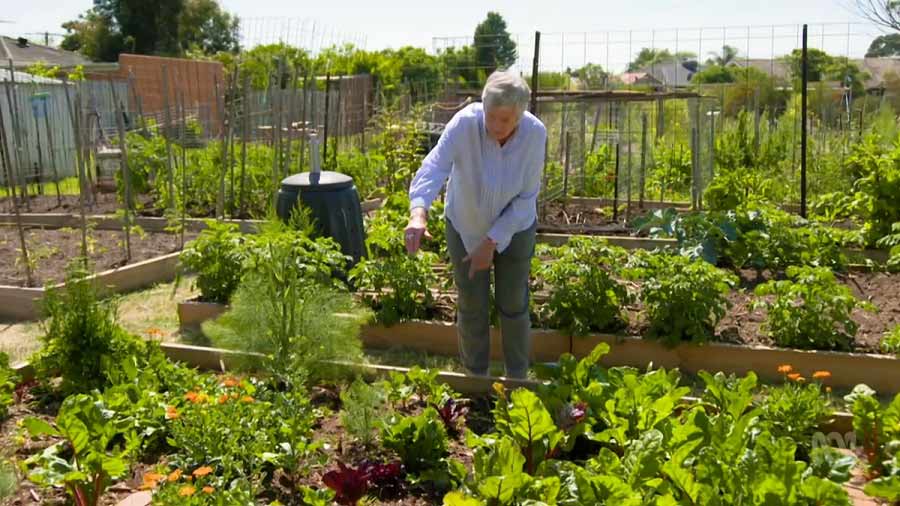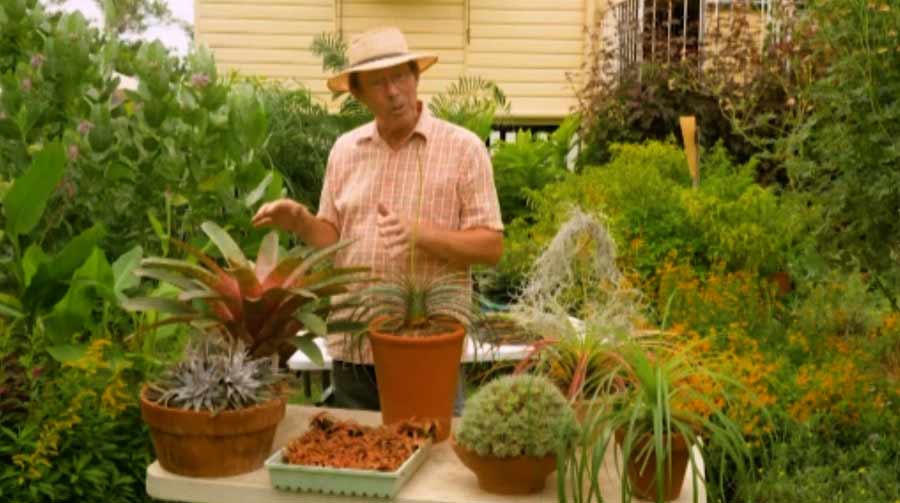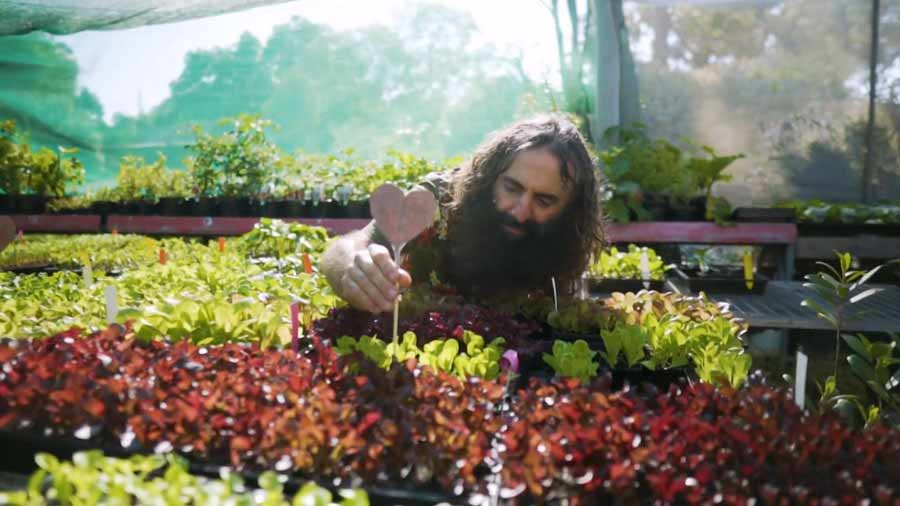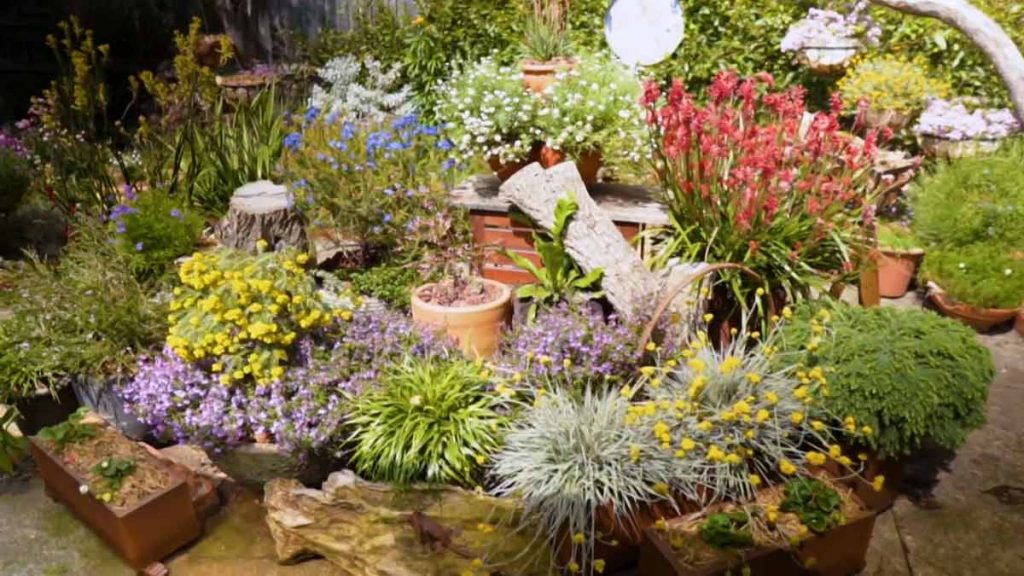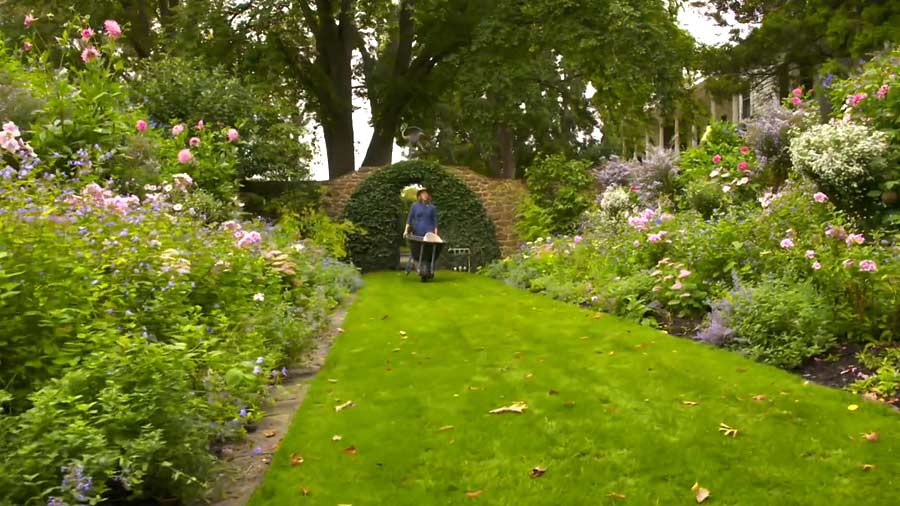Gardening Australia episode 4 2020: Jerry Coleby-Williams explores a restored mangrove wetland, Costa Georgiadis visits a wheat farm, Tino Carnevale meets a gardener just shy of 100 and we meet a creative duo capturing plants in stunning detail.
Gardening Australia has always provided practical, trustworthy and credible gardening advice to inspire and entertain. Inspiring, entertaining and full of practical advice, join Costa Georgiadis and the team as they unearth gardening ideas, meet avid gardeners and look at some of the most inspiring gardens from across the country.
Gardening Australia episode 4 2020
Hot Jobs
Sophie gets stuck into some garden maintenance to keep her favourite summer plants looking fresh through the heat. Sophie braves the heat and heads out into the garden to get on top of some summer jobs, namely with her flowering plants that just relish some attention at this type of year.
FAQS – Storing saved seeds | Sprouting sunflower heads | Ripening tomatoes on vines
Gardening Australia presenters answer commonly asked gardening questions.
Tuerong Farm
Costa visits a farm on Melbourne’s Mornington Peninsula that is growing rare, heritage and heirloom varieties of wheat.
Costa visits Tuerong Farm on Melbourne’s Mornington Peninsula, a 60-hectare property on Melbourne’s peri-urban fringe. “My family’s been involved in the food and agriculture industry all my life…my father’s family were farmers. Dad has this farm and grew wine grapes and ran beef” says farmer Jason Cotter. But in stead of wine and beef, Jason is growing rare, heritage and heirloom varieties of wheat.
Plant Profile – Dahlias
We profile the old-fashioned favourite – the dahlia. Dahlias have attractive foliage, with deep green to bright green lobed leaves, hollow stems, and bold flowerheads that vary greatly. Some modern cultivars (including ‘Heat Seeker’, ‘Clarion’ and ‘Moonfire’) present deep maroon to purple foliage, making a stunning foil or the brightly coloured, daisy-like flowers.
Flowers of Dahlia species can be large and showy but are never as fancy as those of the various garden forms, which occur in a huge range of styles and colours. Dahlias are classified into 10 groups based on the size and type of flowerhead ranging from tiny pompon to large giant-flowered cactus types.
Celebrating a Century
Tino drops by the home of a wonderful gardener, who with the support of family and neighbours, is still active in the garden just shy of her 100th birthday.
Whether you garden to grow your own food, get involved in your local community, plant for wildlife or just love ornamentals, gardening has been proved to have a positive effect on our physical and mental health. Tino meets Kathleen Golder, a keen gardener who is living proof of the life long benefits of gardening – she is about to turn 100, and still get’s into the patch every day!
Compacted Soil Solutions
Jane shares some tips and tricks for identifying and fixing compacted garden soil.
Ideally soil has air pockets to allow moisture, worms, roots and microbes to pass through. When soil gets compacted these air pockets get squeezed out and it’s harder for plants to grow and for water (and nutrients) to reach plants’ roots. Water will pool on the surface instead and the plant can literally suffocate.
Soil compaction can be caused by heavy machinery, too much foot traffic, digging soil when it’s wet, or even over-working the soil. Clay soils are particularly prone.
Nifty Natives – Gardening Australia episode 4 2020
Clarence shares some of his favourite native plants that are both beautiful and functional.
Clarence loves the diversity of Australian native plants, and their clever adaptations that allow them to survive in a huge range of conditions. But what he really loves about our native plants is the many ways they can be used.
Mangrove Makeover
Jerry explores an urban mangrove wetland to discover how hard work and experimentation transformed a former dump site into the kidneys of the ocean. Jerry visits a thriving mangrove wetland in the heart of urban Brisbane-and finds out how hard work and experimentation turned this former dump site into the kidneys of the ocean
We’re at Bulimba Creek “oxbow”, a bend in the creek that adjoins the Brisbane river that feeds out into the coral sea. Visit today and you will see a thriving natural ecosystem, dense mangrove thickets, schools of teeming fish and iridescent birds, all flowing in (and out) from the wider ocean. But this system wasn’t always this way, in fact, it’s only here because people wanted it to be!
Difficult Spots in the Garden
Josh Byrne shows us how to get plants established in a hot and dry spot. Josh has a tricky spot in his garden that cops full sun in summer, and full shade in winter, and after a few failures, he’s trying a couple of new plantings.
But, before he undertakes any new planting, he gets to work on the soil first. Josh removes roots from old plantings, breaks up clods of soil, and adds bentonite clay, compost and pelletised poultry manure. He mixes these thoroughly through the garden bed, ensuring the soil is fluffed, free-draining and ready to plant into.
Homemade Garden Hoe
Millie makes a homemade garden hoe from everyday items found lying around the shed! Millie’s at it again, making a garden hoe out of a handful of stuff you’ve likely got laying around the shed.
My Garden Path – Man and Weh Cheung
We meet Man and Wah Cheung, twin brothers and creative partners, who combine their photography and graphic design skills to capture plants in stunning detail.
Man and Wah Cheung are twin brothers who work together to produce large installations and visual work that highlights the intricacy of plants. They aim to remind people of the crucial role plants play in sustaining a liveable planet and inspire people to connect back with nature.
